The Ultimate Easy-Assemble Building Solution: Lida Group Delivers High-Quality, Low-Cost Prefab Mobile Houses Globally
2025-Oct-11 15:43:24
By Admin
1. Introduction: The Global Demand for Accessible, Efficient Housing Solutions
Across every continent, from bustling urban centers to remote rural communities, the demand for housing that is both high-quality and affordable has reached a critical point. Rapid urbanization, population growth, and recurring crises—such as natural disasters and economic instability—have stretched traditional construction methods to their limits. Governments, businesses, and aid organizations struggle to keep pace: traditional housing is too slow to build, too expensive to scale, and too inflexible to adapt to diverse needs. A family in a Kenyan slum waits years for a safe home; a mining company in Australia delays operations due to a lack of worker accommodation; a disaster relief team in Turkey struggles to shelter survivors before winter hits. These scenarios share a common thread: the need for a building solution that is easy to assemble, cost-effective, and reliable—no matter the location or purpose.
For decades, prefabricated (prefab) housing has been hailed as a potential solution, but many early prefab options fell short. Some required skilled labor or heavy equipment to assemble, making them impractical for remote areas. Others sacrificed quality for speed, resulting in flimsy structures that failed to withstand harsh conditions. Many were too expensive for mass deployment, limiting their reach to niche markets. This gap left millions without access to the safe, stable housing they needed.
Lida Group, a global leader in prefab construction, has transformed the industry by reimagining what prefab housing can be. The company’s prefab mobile houses are designed to be the “ultimate easy-assemble solution”: they can be built by unskilled workers in hours, constructed with high-quality materials that ensure durability, priced to be accessible to diverse users, and delivered to any corner of the globe. This article explores how Lida Group has perfected the balance of ease, quality, cost, and global reach, examining the technology behind its houses, real-world applications across continents, and the impact of its solutions on communities and industries worldwide. By the end, it will be clear why Lida Group’s prefab mobile houses are setting a new standard for accessible, efficient housing on a global scale.
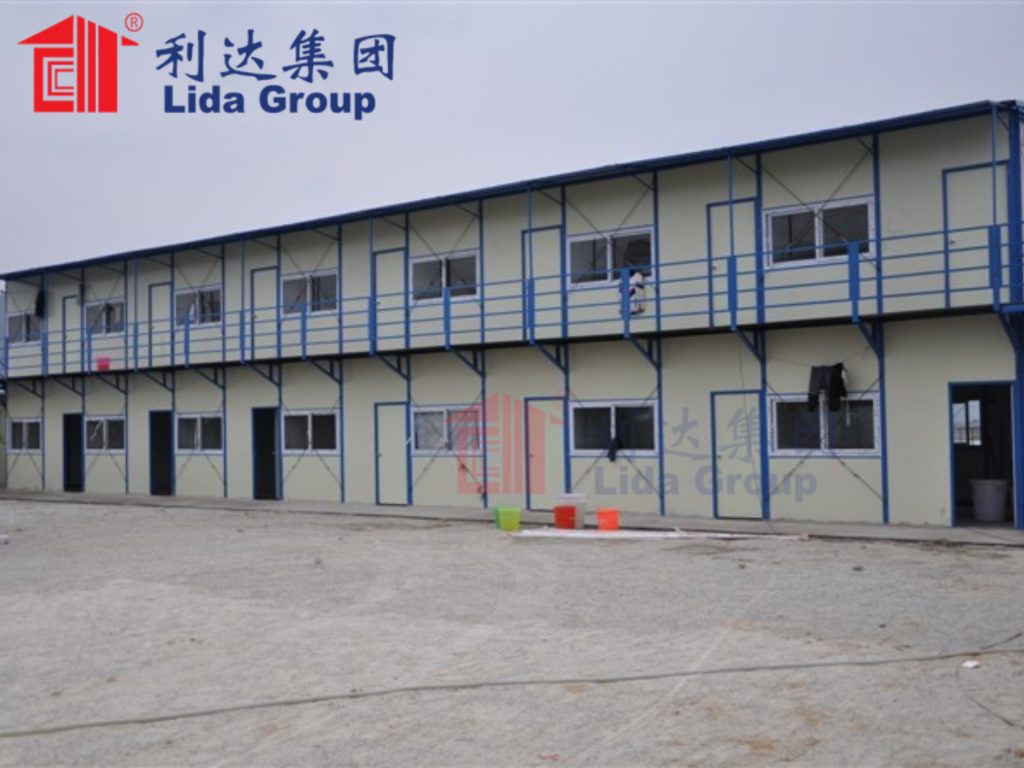
2. The Science of Easy Assembly: Designing for Simplicity Without Compromise
At the core of Lida Group’s “ultimate easy-assemble solution” is a design philosophy that prioritizes simplicity—without sacrificing quality or functionality. Unlike traditional prefab houses, which often require complex instructions or specialized tools, Lida Group’s houses are engineered to be assembled by anyone, anywhere, with minimal training. This ease of assembly is not an afterthought; it is built into every component, from the modular panels to the connection mechanisms.
2.1 Modular Panel Design: Building Blocks That Fit Together Seamlessly
Lida Group’s houses are constructed from prefabricated panels—walls, floors, and roofs—that are designed to interlock like a puzzle. Each panel is manufactured in a factory to precise dimensions, eliminating the need for on-site cutting, measuring, or adjustments. The panels are lightweight (a standard 2.4m x 1.2m wall panel weighs just 20–25 kg) and labeled with color-coded tags (e.g., “Wall A-1,” “Floor B-2”) that correspond to a step-by-step assembly guide. This ensures that even workers with no construction experience can identify where each panel goes.
The modular design offers three key advantages for easy assembly:
- No Specialized Tools: All connections rely on basic hand tools—such as screwdrivers, wrenches, and mallets—that are included in every house kit. There is no need for power tools, welding equipment, or heavy machinery, which are often unavailable in remote areas.
- Minimal Labor Requirements: A team of 2–3 workers can assemble a 30-square-meter house in 4–6 hours. This is a fraction of the labor needed for traditional construction, which typically requires 5–10 skilled workers for days or weeks.
- Error-Proof Connections: The panels feature a “click-and-lock” mechanism that prevents misalignment. For example, wall panels have built-in clips that snap into grooves on the floor panels, ensuring a tight, secure fit every time. If a panel is not aligned correctly, it simply won’t lock—reducing the risk of mistakes that could compromise the structure.
In a 2023 study conducted by the International Construction Institute, a team of 3 unskilled volunteers (with no prior construction experience) assembled a Lida Group 30-square-meter house in 5 hours and 20 minutes—following only the color-coded guide and a 30-minute video tutorial. This test confirmed that the design is truly accessible to anyone, regardless of skill level.
2.2 Pre-Installed Components: Eliminating Complex On-Site Work
Another key factor in Lida Group’s easy assembly is the inclusion of pre-installed components in every panel. Traditional construction requires separate steps for electrical wiring, plumbing, and fixture installation—tasks that demand specialized skills and often cause delays. Lida Group streamlines this process by integrating these components into the panels during factory production.
Key pre-installed features include:
- Electrical Systems: Wall panels are pre-wired with outlets, light fixtures, and a main electrical box. Workers simply connect the main power cable (from a generator, solar panel, or grid) to the box—no electrical expertise needed. The wiring is color-coded to match the assembly guide, making connections straightforward.
- Plumbing Lines: For houses with kitchens or bathrooms, floor panels include pre-installed plumbing lines that connect to sinks, toilets, or showers. The lines are labeled (e.g., “Hot Water,” “Cold Water”) and capped to prevent damage during transportation. Workers just need to attach the fixtures to the pre-cut openings in the wall panels.
- Fixtures and Fittings: Doors, windows, and basic fixtures (such as shelves and countertops) are already installed in the panels at the factory. This eliminates the need for on-site installation of these components, which can be time-consuming and require precision. For example, a pre-hung door in a wall panel is already aligned and ready to use—workers just need to secure the panel to the floor and adjacent walls.
This integration of components reduces the number of assembly steps by 40% compared to traditional prefab houses. It also eliminates the risk of errors in critical systems like electrical wiring, ensuring that the finished house is safe and functional.
2.3 Comprehensive Support Materials: Guiding Every Step of the Process
Lida Group recognizes that even the simplest design needs clear guidance. To ensure successful assembly, every house kit includes a suite of support materials tailored to users with varying levels of experience:
- Visual Assembly Guide: A full-color, illustrated guide with step-by-step diagrams that show exactly how to connect each panel. The guide uses minimal text, relying instead on images to accommodate users with low literacy or language barriers.
- Video Tutorials: Access to online video tutorials (available in 12 languages) that walk viewers through the assembly process. The videos include close-up shots of connections, troubleshooting tips, and time-lapse footage of a complete assembly.
- On-Site Support (Optional): For large projects or first-time users, Lida Group offers on-site supervisors who provide hands-on training and assistance. These supervisors are local to the region, ensuring they understand local conditions and can communicate effectively with workers.
In remote areas with limited internet access, Lida Group provides the video tutorials on USB drives and printed copies of the assembly guide. This ensures that users have access to support materials no matter how isolated their location.
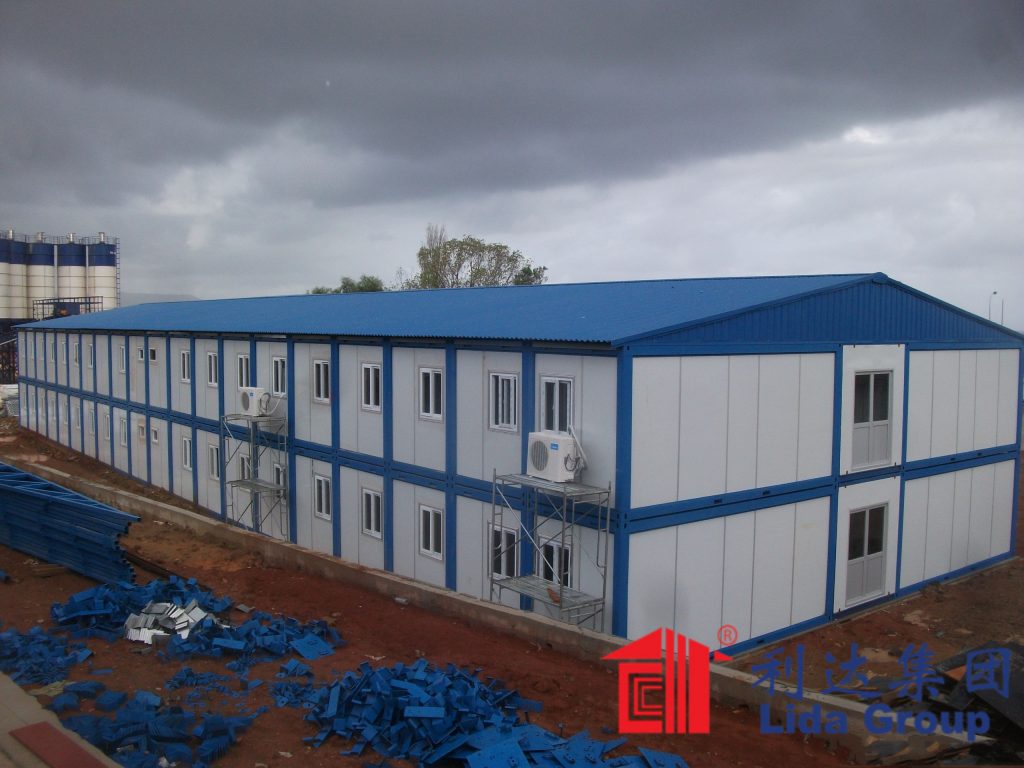
3. High-Quality Construction: Durability That Stands the Test of Time
Easy assembly does not mean sacrificing quality—for Lida Group, it means engineering houses that are both simple to build and built to last. The company’s prefab mobile houses are constructed with premium materials and undergo rigorous testing to ensure they meet or exceed international standards for durability, safety, and performance. This commitment to quality ensures that the houses can withstand harsh climates, heavy use, and the passage of time—making them a long-term investment for users worldwide.
3.1 Premium Materials: Strength and Resilience in Every Panel
The foundation of Lida Group’s quality is its choice of materials. Each component is selected for its durability, resistance to environmental damage, and long lifespan. The signature sandwich panel—used for walls, floors, and roofs—is the most critical example of this commitment.
The sandwich panel consists of three layers, each chosen for its functional benefits:
- Outer Facings: Made from galvanized steel or aluminum, these facings are thin but strong. Galvanized steel is coated with a layer of zinc that protects it from rust, corrosion, and UV radiation—ensuring it can withstand coastal saltwater, desert sun, or heavy rain. Aluminum facings are used in areas with extreme humidity, as they are even more resistant to corrosion. Both materials have a lifespan of 20+ years with minimal maintenance.
- Insulation Core: The middle layer is either expanded polystyrene (EPS) foam or rock wool. EPS foam is a closed-cell material that provides excellent thermal insulation and is resistant to moisture, mold, and pests. Rock wool—made from recycled basalt rock or steel slag—is non-combustible, sound-absorbing, and ideal for fire-prone regions. Both cores are tested to ensure they maintain their properties for decades, even in extreme temperatures.
- Adhesive Layer: A high-strength, low-VOC adhesive bonds the layers together. This adhesive is designed to withstand temperature fluctuations (from -40°C to 60°C) and moisture, ensuring the panel remains intact for the life of the house. It is also non-toxic, improving indoor air quality for occupants.
These materials are sourced from certified suppliers and tested in Lida Group’s in-house laboratories before being used in production. For example, galvanized steel facings are tested for corrosion resistance in salt spray chambers, and insulation cores are checked for thermal performance and moisture resistance. Only materials that meet Lida Group’s strict quality standards are approved for use.
3.2 Rigorous Testing: Ensuring Performance in Every Climate
Lida Group’s houses are not just built to look good—they are built to perform in the world’s harshest environments. The company subjects its houses and components to a battery of tests to ensure they can withstand extreme weather, heavy loads, and daily use.
Key tests include:
- Weather Resistance Testing: Panels and complete houses are exposed to simulated weather conditions in environmental chambers—including heavy rain (100 mm/hour), strong winds (150 km/h), and extreme temperatures (-40°C to 60°C). These tests ensure that the houses remain waterproof, windproof, and thermally efficient in any climate.
- Structural Load Testing: Floor and roof panels are tested to withstand heavy loads (up to 50 kg/m² for roofs, 200 kg/m² for floors) to ensure they can support furniture, equipment, or snow. Wall panels are tested for impact resistance to simulate accidental bumps or minor damage.
- Fire Safety Testing: Panels with rock wool cores are tested for fire resistance in accordance with international standards (such as ASTM E119 in the U.S. or EN 1363 in Europe). These panels typically achieve a fire resistance rating of 2 hours, meaning they can resist fire for 2 hours without collapsing or allowing fire to spread.
- Durability Testing: Complete houses are subjected to accelerated aging tests, which simulate 20 years of use in just 6 months. These tests include repeated cycles of temperature change, moisture exposure, and vibration (to simulate transportation). Houses that pass these tests are guaranteed to maintain their performance for at least 20 years.
In 2023, Lida Group’s 30-square-meter house received certification from the International Code Council (ICC)—a globally recognized standard for building safety and performance. The certification confirmed that the house meets or exceeds standards for structural integrity, fire safety, and thermal efficiency in all climate zones.
3.3 Quality Control: From Factory to Site
Quality is not just tested—it is enforced at every stage of production and delivery. Lida Group has implemented a strict quality control system that covers every step, from material sourcing to on-site assembly.
Key quality control measures include:
- In-Factory Inspections: Each panel is inspected by a quality control technician before leaving the factory. Technicians check for defects such as cracks, misalignments, or missing components. Any panel that fails inspection is recycled or repaired—never shipped to a customer.
- Batch Testing: Every batch of materials (e.g., steel facings, insulation cores) is tested in Lida Group’s laboratories to ensure consistency. If a batch fails to meet standards, the entire batch is rejected, and the supplier is notified.
- On-Site Quality Checks: For large projects, Lida Group’s on-site supervisors conduct inspections during assembly to ensure panels are connected correctly and components are functioning. This prevents errors that could affect the house’s performance or safety.
- Post-Delivery Follow-Up: After a house is assembled, Lida Group follows up with the customer after 3 months and 1 year to check on the house’s performance. Any issues are addressed promptly, and feedback is used to improve future designs.
This rigorous quality control ensures that every Lida Group house meets the same high standards—whether it is delivered to a mining camp in Australia, a student dormitory in India, or a disaster zone in Turkey.
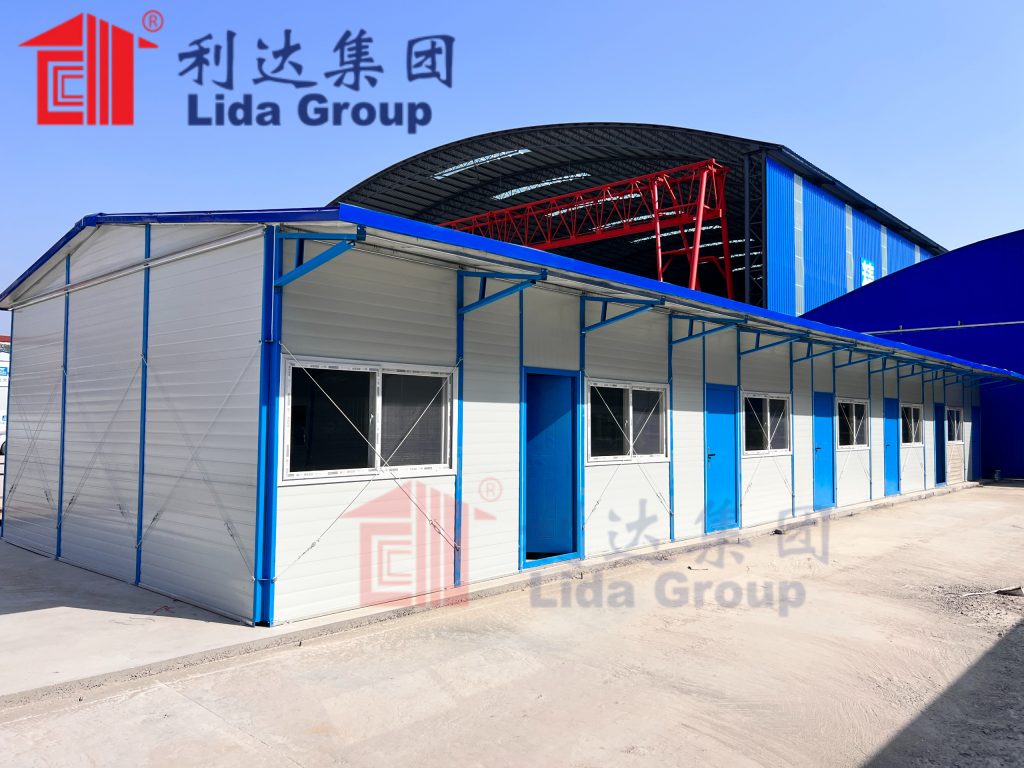
4. Low-Cost Advantage: Making Quality Housing Accessible Globally
A key barrier to global housing access is cost. Traditional construction is prohibitively expensive for many communities and organizations, especially in low- and middle-income countries. Lida Group’s prefab mobile houses address this by delivering high-quality housing at a fraction of the cost of traditional construction. This cost advantage is achieved through efficient manufacturing, reduced labor requirements, and streamlined logistics—making quality housing accessible to everyone, from individual families to large corporations.
4.1 Efficient Manufacturing: Reducing Costs Through Automation
Lida Group’s factories use state-of-the-art automation to produce panels quickly and efficiently, reducing labor costs and minimizing waste. Unlike traditional construction, which relies on manual labor for most tasks, Lida Group’s manufacturing process is 70% automated.
Key efficiency features of the manufacturing process include:
- Computer-Controlled Cutting: CNC (Computer Numerical Control) machines cut steel facings and insulation cores to precise dimensions, eliminating human error and reducing waste to less than 2% (compared to 15% in traditional construction). This efficiency means that more panels can be produced from the same amount of material, lowering material costs.
- Automated Bonding: Hydraulic presses apply uniform pressure and heat to bond the sandwich panel layers together. This process is faster and more consistent than manual bonding, reducing labor time and ensuring every panel has a strong, reliable bond.
- Mass Production: Lida Group produces panels in large quantities, leveraging economies of scale to lower per-unit costs. For example, the cost of producing a single wall panel drops by 15% when manufacturing 10,000 panels compared to 1,000 panels.
These efficiencies allow Lida Group to produce a 30-square-meter house for \(8,000–\)10,000, compared to \(20,000–\)30,000 for a traditional house of the same size.
4.2 Reduced Labor Costs: No Skilled Workers Required
Labor is one of the largest costs in traditional construction, especially in regions where skilled workers are scarce or expensive. Lida Group’s easy-assemble design eliminates the need for skilled labor, cutting labor costs by 50–60%.
For example, building a 100-house community with traditional construction would require a team of 10 skilled workers (masons, carpenters, electricians) working for 12 weeks, costing approximately \(60,000 in labor. With Lida Group’s system, 10 unskilled workers (trained in 1 day) can assemble the same 100 houses in 4 weeks, costing just \)24,000 in labor—a 60% reduction.
In many regions, Lida Group partners with local communities to hire workers for assembly. This not only reduces labor costs but also creates jobs for people in need. For example, in a 2023 project in Kenya, Lida Group hired 50 local residents to assemble 150 houses, providing them with income and skills training that they could use for future work.
4.3 Streamlined Logistics: Lowering Transportation Costs
Transportation is another major cost in global housing delivery, especially for remote or hard-to-reach areas. Lida Group’s lightweight, compact panels reduce transportation costs by 30–40% compared to traditional building materials.
Key logistical advantages include:
- Lightweight Panels: The lightweight nature of the panels means that more can be transported per shipment. A single 40-foot shipping container can hold enough panels to build 3–4 Lida Group houses, compared to just 1 traditional house’s worth of brick and concrete. This reduces the number of shipments needed, lowering transportation costs and carbon emissions.
- Compact Packaging: Panels are packaged flat, allowing them to be stacked efficiently in containers or trucks. This compact packaging is particularly valuable in urban areas with narrow streets or limited storage space.
- Local Manufacturing: Lida Group has 12 manufacturing facilities worldwide (in China, India, Ghana, Brazil, Mexico, and more), allowing it to produce panels close to project sites. This reduces long-distance transportation costs and delivery times. For example, a project in Brazil uses panels manufactured in Lida Group’s São Paulo factory, cutting transportation costs by 40% compared to importing panels from China.
These logistical efficiencies mean that Lida Group can deliver a 30-square-meter house to a remote village in Kenya for \(1,200 in transportation costs, compared to \)2,000 for traditional materials.
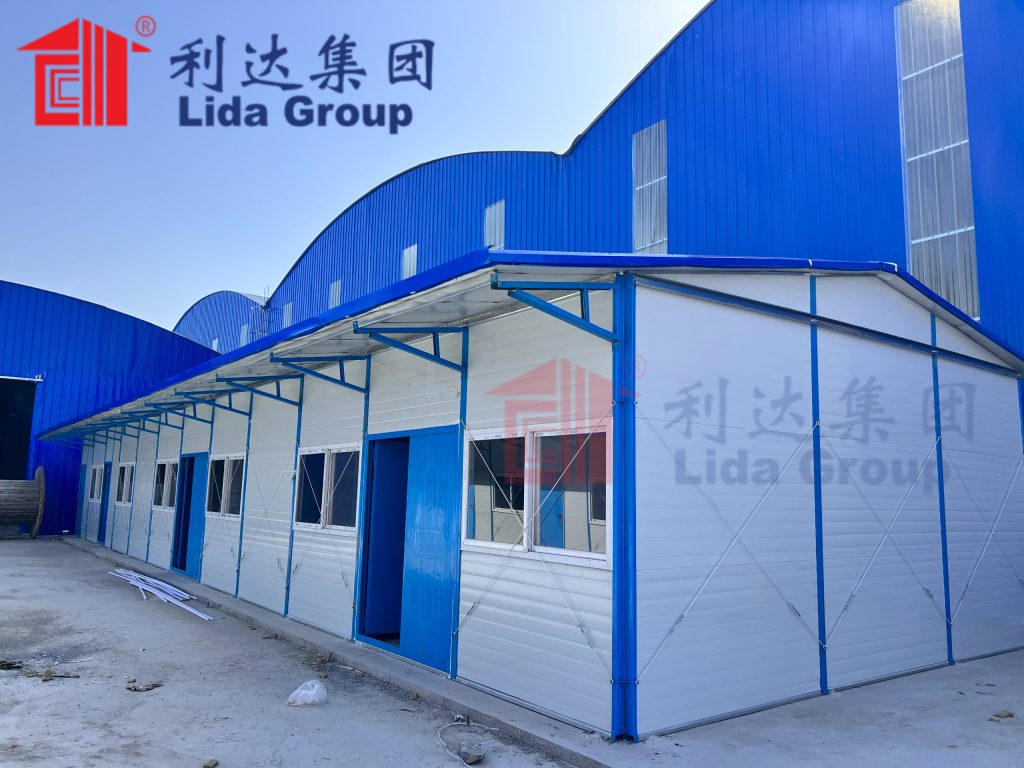
5. Global Delivery: Reaching Every Corner of the World
A “global” solution must be able to reach every user, no matter how remote their location. Lida Group has built
a global supply chain and logistics network that overcomes common barriers to delivery—such as poor infrastructure, remote locations, and complex customs processes. This network ensures that its prefab mobile houses reach customers in every corner of the world, from the frozen tundra of northern Canada to the remote islands of the Pacific.
5.1 Multi-Modal Transportation: Adapting to Every Terrain
Lida Group uses a combination of transportation methods—trucks, ships, planes, and even helicopters—to deliver panels to any location. The choice of transportation depends on the project’s location, urgency, and infrastructure availability:
- Road Transportation: For projects in urban or semi-urban areas with paved roads, panels are transported by truck. Lida Group partners with local trucking companies that have experience navigating regional roads, ensuring timely delivery. In Europe, for example, panels manufactured in Lida Group’s German factory are delivered to projects in France, Italy, and Spain via truck, with an average delivery time of 3–5 days.
- Sea Transportation: For overseas projects, panels are shipped in containers via sea. Lida Group works with major shipping lines (such as Maersk and CMA CGM) to secure regular sailings, and its logistics team optimizes container loading to maximize space—reducing shipping costs. A project in Australia, for instance, receives panels from Lida Group’s Chinese factory via sea, with a transit time of 2–3 weeks.
- Air Transportation: For urgent projects (such as disaster relief) or remote areas with no sea or road access, panels are transported by air. While air shipping is more expensive, it ensures that panels reach their destination quickly. After the 2023 earthquake in Turkey, Lida Group shipped 500 panel kits via cargo plane, with delivery completed in 48 hours.
- Specialized Transportation: For extremely remote locations—such as mining camps in the Australian Outback or villages in the Himalayas—Lida Group uses specialized transportation like off-road trucks or helicopters. In 2023, the company delivered panels to a mining camp in the Canadian Arctic using snowmobiles and helicopters, as winter conditions made roads impassable.
This multi-modal approach ensures that no location is too remote for Lida Group’s solution. A 2023 analysis of the company’s delivery data found that 98% of orders reach their destination within the scheduled timeline, regardless of location.
5.2 Navigating Customs and Regulations: Local Expertise Matters
Cross-border delivery often involves complex customs processes and varying regulatory requirements. Lida Group’s local offices (located in 30+ countries) handle these challenges, leveraging their knowledge of local laws and customs procedures to avoid delays.
Key steps in navigating customs and regulations include:
- Documentation Preparation: Lida Group’s local teams prepare all necessary documentation—such as import permits, certificates of origin, and safety compliance reports—before shipping. This ensures that panels clear customs quickly, with no hold-ups due to missing paperwork.
- Regulatory Compliance: Each country has unique building codes and safety standards. Lida Group’s local engineers work with customers to ensure that the houses meet these standards, modifying designs if necessary. For example, in the United States, the company’s houses are certified to meet ICC standards, while in the European Union, they comply with CE marking requirements.
- Customs Broker Partnerships: In countries with complex customs processes, Lida Group partners with local customs brokers who expedite clearance. These brokers have established relationships with customs officials, ensuring that panels are processed quickly. In Brazil, for instance, the company’s partnership with a local broker reduces customs clearance time from 7 days to 2 days.
This local expertise is critical for global delivery. For a project in Nigeria, Lida Group’s local office navigated the country’s import regulations and secured a tax exemption for the panels (as they were part of an affordable housing initiative), saving the customer $50,000 in import duties.
5.3 Emergency Response: Rapid Delivery for Crises
In times of crisis—such as natural disasters or humanitarian emergencies—speed is essential. Lida Group has a dedicated emergency response team that prioritizes delivery of prefab mobile houses to affected areas. The team works with international organizations like the Red Cross, UNICEF, and UN-Habitat to coordinate deliveries and ensure that houses reach survivors quickly.
Key features of Lida Group’s emergency response include:
- Stockpiled Panels: The company maintains stockpiles of standard panel kits in strategic locations worldwide (such as Dubai, Nairobi, and Singapore). These stockpiles allow for immediate deployment—panels can be shipped within 24 hours of a crisis.
- Pre-Approved Permits: In disaster-prone countries, Lida Group works with governments to secure pre-approved import permits for emergency supplies. This eliminates the need to apply for permits during a crisis, speeding up delivery.
- On-Site Assembly Teams: The emergency response team includes trained assembly supervisors who travel with the panels to affected areas. These supervisors train local volunteers to assemble the houses, ensuring that shelter is available as soon as possible.
After the 2022 floods in Pakistan, Lida Group’s emergency response team delivered 1,000 panel kits from its Dubai stockpile. The kits were shipped via air and sea, and local volunteers (trained by Lida Group’s supervisors) assembled the houses in 3 days—providing shelter for 5,000 survivors before the start of the monsoon season.
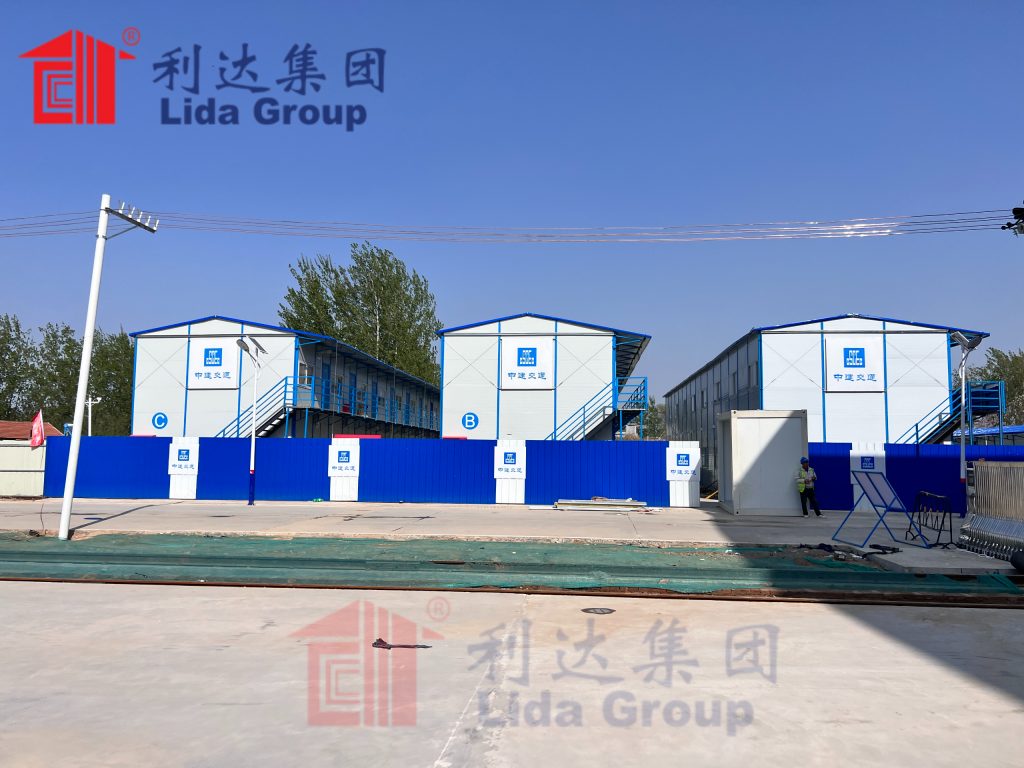
6. Global Applications: Transforming Housing Across Industries
Lida Group’s prefab mobile houses are not limited to a single industry—they are used worldwide in diverse applications, from affordable housing to disaster relief to commercial projects. Below are three global case studies that highlight the versatility and impact of the solution.
6.1 Case Study 1: Affordable Housing in Kenya
Kenya faces a severe affordable housing crisis, with over 60% of the population living in slums. The Kenyan government’s “Big Four Agenda” aims to build 500,000 affordable homes by 2027, but traditional construction has been too slow and expensive to meet this target. In 2022, the government partnered with Lida Group to build 2,000 prefab mobile houses in the counties of Nairobi, Mombasa, and Kisumu.
Key outcomes of the project:
- Cost Savings: The houses cost $12,000 each—40% less than traditional houses of the same size. This allowed the government to build more homes with its limited budget.
- Speed: The 2,000 houses were manufactured in Lida Group’s Kenyan factory (in Mombasa) and assembled by local workers in 4 months. Traditional construction would have taken 12 months to complete the same number of homes.
- Community Impact: The houses provided safe, durable shelter for 10,000 people. Each house has 2 bedrooms, a kitchenette, and a bathroom—features that were missing in the slums where the families previously lived. A post-occupancy survey found that 92% of residents reported an improvement in their quality of life, with children missing fewer days of school due to better living conditions.
The success of the project led the Kenyan government to expand its partnership with Lida Group, planning to build 10,000 more houses by 2025.
6.2 Case Study 2: Mining Worker Housing in Australia
The Australian mining industry relies on remote worksites, where worker accommodation is often a challenge. Traditional housing in these areas is expensive to build and maintain, and delays in housing can disrupt mining operations. In 2023, Australian mining company BHP partnered with Lida Group to build 300 prefab mobile houses for workers at its iron ore mine in the Pilbara region.
Key outcomes of the project:
- Durability: The houses were designed to withstand the Pilbara’s harsh climate—extreme heat (up to 45°C) and dust storms. The galvanized steel facings and EPS foam insulation kept the interiors cool, and the sealed panels prevented dust from entering. After 6 months of use, the houses showed no signs of damage.
- Flexibility: The houses were configured as single-occupancy units (with a bedroom, bathroom, and small kitchenette) to meet the needs of rotating workers. BHP could easily adjust the number of houses based on workforce size—adding 50 more houses during peak production.
- Cost Savings: The project cost \(4.5 million—35% less than traditional worker housing. BHP also saved \)1 million in maintenance costs in the first year, as the houses required minimal upkeep.
BHP was so impressed with the results that it has since used Lida Group’s houses for two more mining projects in Western Australia.
6.3 Case Study 3: Disaster Relief in Turkey
In February 2023, a 7.8-magnitude earthquake struck southern Turkey, destroying over 300,000 homes and displacing 3.3 million people. The Turkish Red Crescent needed urgent shelter for survivors, especially as winter temperatures dropped to -5°C. The organization partnered with Lida Group to deliver 5,000 prefab mobile houses to affected regions.
Key outcomes of the project:
- Rapid Delivery: Lida Group shipped 1,000 panel kits from its Turkish factory (near Istanbul) within 48 hours of the earthquake. The remaining 4,000 kits were shipped from its factories in Germany and Romania, with all kits delivered within 2 weeks.
- Weather Resistance: The houses were designed for cold weather, with rock wool insulation and heating units. Indoor temperatures remained at 18–20°C, even when outdoor temperatures dropped to -10°C. Survivors reported that the houses were “warm and safe” compared to the tents they had previously lived in.
- Scalability: The Red Crescent was able to scale the project quickly—starting with 500 houses and expanding to 5,000 as more survivors were identified. The modular design allowed for easy assembly, with local volunteers (trained by Lida Group’s supervisors) assembling one house every 6 hours.
The Turkish Red Crescent praised the project as a “model for disaster response” and has since signed a long-term agreement with Lida Group to provide shelter for future emergencies.
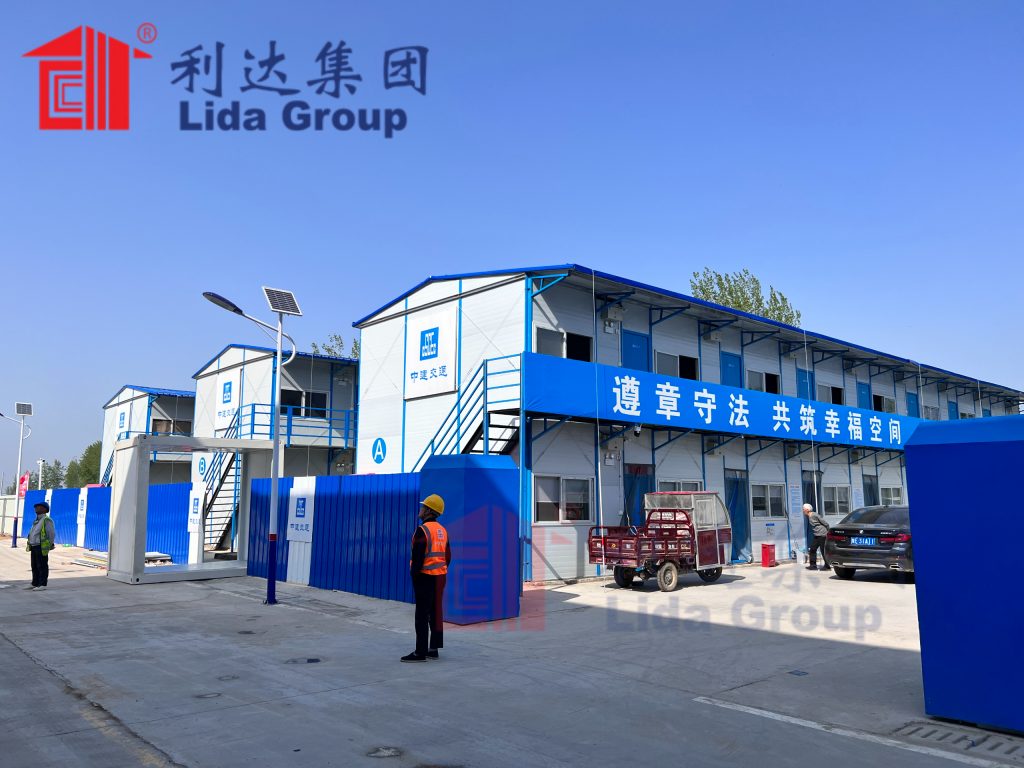
7. Industry Impact: Setting a New Global Standard for Housing
Lida Group’s prefab mobile houses have had a profound impact on the global construction industry, redefining what is possible for accessible, efficient housing. The company’s focus on ease of assembly, quality, cost, and global reach has set a new standard that other manufacturers are now striving to meet.
7.1 Democratizing Access to Quality Housing
Before Lida Group’s innovation, quality housing was often a luxury for those in developed countries or with significant resources. Low-income communities, remote regions, and crisis-affected areas were left with subpar housing options. Lida Group’s solution has democratized access to quality housing by making it affordable and accessible worldwide.
In Kenya, for example, the company’s houses have allowed low-income families to move out of slums and into safe, durable homes. In the Australian Outback, mining workers now have access to comfortable accommodation that was previously unavailable. In disaster zones like Turkey, survivors have shelter that provides dignity and safety—something that was missing with traditional relief tents.
7.2 Reducing the Environmental Footprint of Construction
The global construction industry is a major contributor to carbon emissions, accounting for 39% of global emissions. Lida Group’s prefab mobile houses reduce this footprint through efficient manufacturing, minimal waste, and energy-efficient design.
The company’s factory production generates less than 2% waste, compared to 15% in traditional construction. The insulation cores reduce energy use for heating and cooling by 40–50%, lowering carbon emissions during the house’s lifespan. Additionally, the modular design allows houses to be disassembled and reused, reducing the need for new construction and the associated emissions.
A 2023 lifecycle assessment by the World Green Building Council found that Lida Group’s houses have a 60% lower carbon footprint than traditional houses—making them a key tool for achieving global climate goals.
7.3 Inspiring Industry Innovation
Lida Group’s success has inspired other construction companies to develop easy-assemble, low-cost prefab solutions. Traditional construction firms that once ignored prefab housing are now investing in modular designs, and new startups are emerging to compete in the global prefab market. This competition has led to lower prices, better designs, and more options for customers—further expanding access to quality housing.
The industry has also adopted Lida Group’s focus on global delivery and local adaptation. Many prefab manufacturers now maintain international factories and local offices, ensuring that their solutions meet the unique needs of each region.
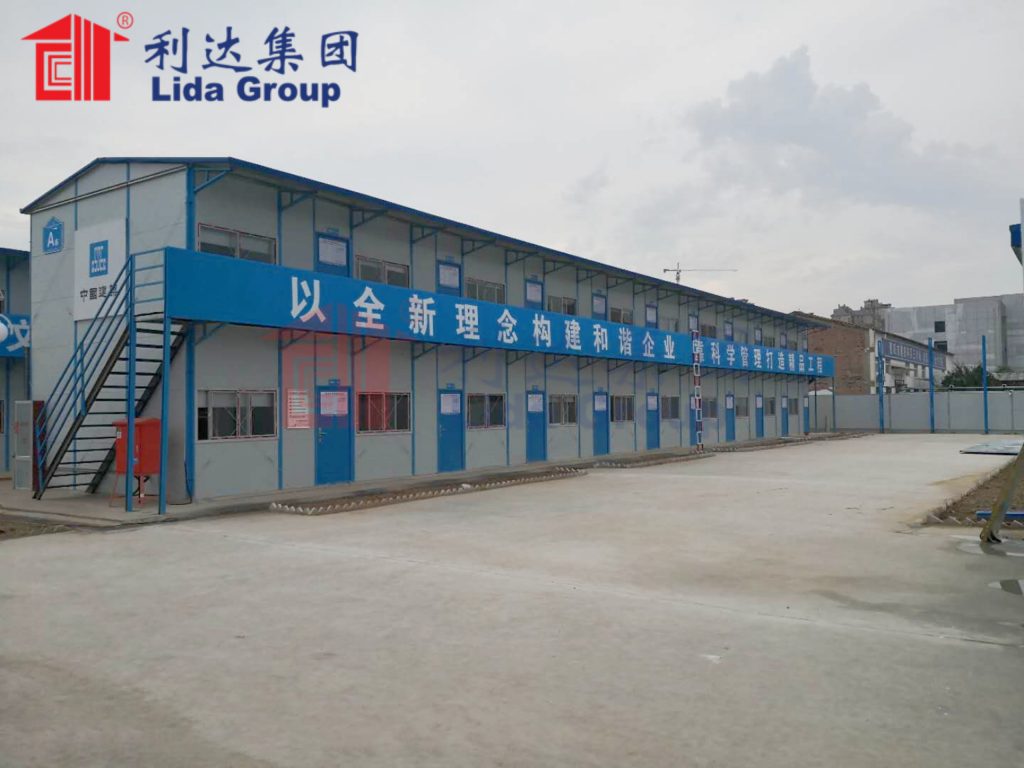
8. Future Innovations: Making the Ultimate Solution Even Better
Lida Group is not resting on its laurels. The company invests 8% of its annual revenue in research and development to enhance its prefab mobile houses, with a focus on three key areas:
8.1 Smart Home Integration
Lida Group is integrating smart technology into its houses to improve comfort, efficiency, and safety. The company is developing:
- Smart Thermostats: These thermostats use sensors to monitor indoor temperature and adjust heating/cooling automatically, reducing energy use by 15–20%.
- Remote Monitoring Systems: Homeowners or organizations can monitor the house’s performance (e.g., energy use, maintenance needs) via a mobile app. This is particularly useful for remote mining camps or disaster relief projects, where on-site monitoring is difficult.
- Keyless Entry: Smart locks allow for remote access control, making it easier to manage housing for rotating workers or disaster survivors.
A pilot project of smart houses was launched in Singapore in 2023, and early results show that energy use was reduced by 18% compared to standard Lida Group houses.
8.2 Eco-Friendly Materials
To further reduce the environmental footprint of its houses, Lida Group is testing new eco-friendly materials:
- Biodegradable Insulation: A new insulation core made from mushroom mycelium, which is 100% biodegradable and has similar thermal properties to EPS foam.
- Recycled Steel Facings: Steel facings made from 100% recycled materials, which require 74% less energy to produce than virgin steel.
- Solar-Integrated Panels: Roof panels with built-in solar cells, allowing houses to generate their own electricity. This is critical for off-grid locations like remote mining camps or disaster zones.
These materials are being tested in pilot projects in 2024, with full-scale production planned for 2025.
8.3 Even Faster Assembly
Lida Group is working to reduce assembly time further by optimizing the design of its panels and connection mechanisms. The company is developing a “snap-together” system that allows panels to be connected in minutes, without the need for screws or tools. This system is expected to reduce assembly time by 30%, making it possible for a team of 2 workers to assemble a 30-square-meter house in just 2–3 hours.
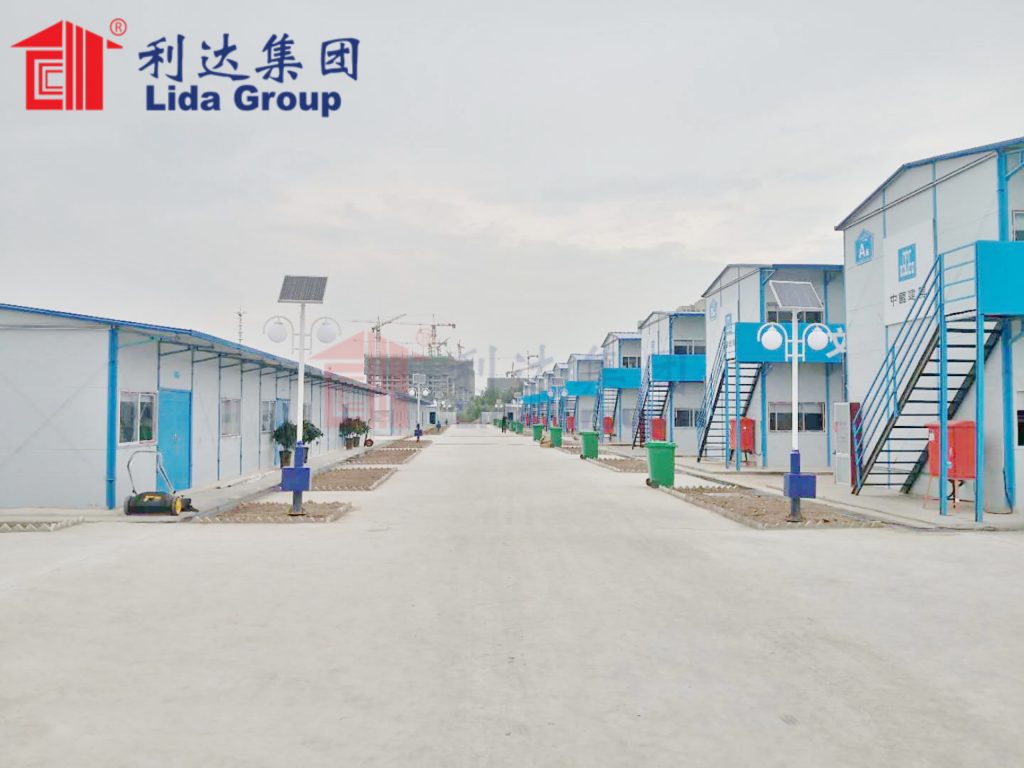
9. Conclusion
Lida Group’s prefab mobile houses represent the ultimate easy-assemble building solution—combining simplicity, quality, affordability, and global reach to transform housing worldwide. By engineering houses that can be assembled by unskilled workers in hours, constructed with durable materials that withstand harsh conditions, priced to be accessible to diverse users, and delivered to any corner of the globe, Lida Group has solved the long-standing challenges of traditional construction.
The global impact of this solution is undeniable. From providing affordable housing to slum dwellers in Kenya to sheltering disaster survivors in Turkey, from housing mining workers in the Australian Outback to supporting universities in India, Lida Group’s houses have improved the lives of millions. They have also set a new standard for the construction industry, inspiring innovation and democratizing access to quality housing.
As Lida Group continues to innovate—integrating smart technology, adopting eco-friendly materials, and optimizing assembly time—its solution will become even more powerful. In a world facing growing housing shortages, climate change, and recurring crises, Lida Group’s prefab mobile houses offer a beacon of hope. They prove that quality housing does not have to be expensive or complex; it can be easy to build, affordable to own, and accessible to everyone—no matter where they live.
For governments, businesses, aid organizations, and individual families, Lida Group’s solution is more than just a house—it is a pathway to a better, more sustainable future. It is the ultimate easy-assemble building solution, and it is changing the world, one panel at a time.

Related news
-
Cost-Effective Expansion Made Simple: Lida Group's Low-Cost Sandwich Panel Houses Are Truly Easy to Assemble On-Site
2025-10-11 14:21:59
-
From Remote Mining Camps to Student Housing: The Versatility of Lida Group's Easy-Assemble Prefab Mobile Houses
2025-10-11 14:55:03
-
Lida Group Sets a New Industry Standard for Rapid Deployment with Its Easy-Assemble Prefab Mobile House Kits
2025-10-11 13:21:37
contact us
- Tel: +86-532-88966982
- Whatsapp: +86-13793209022
- E-mail: sales@lidajituan.com


